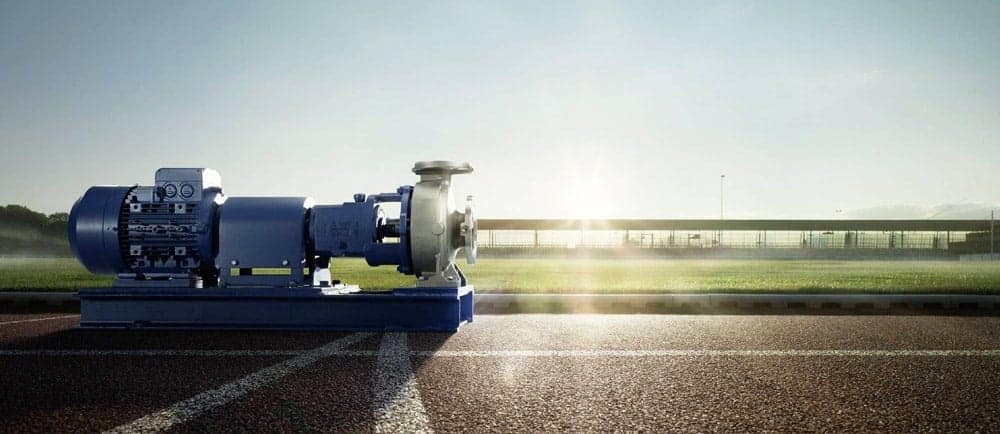The basis of globalization


For around ten years, KSB has been optimizing its master data in the SAP ERP system with the support and software of Simus Systems from Karlsruhe.
The cooperation started with the support in the development of a class model and the implementation of a class and characteristic management for SAP 4/5.
While this should act as the leading system, the user interface for designers should be more user-friendly, flexible and performant:
"Designers tend to think in terms of table structures and are not necessarily friends of maintaining individual data records as the SAP standard provides"
says Karlheinz Steier, who deals with strategy, processes and structures.
Since then, the Simus Classmate software has been used as class and characteristic management for several SAP clients. It is based on an efficient data model that can cleverly handle proficiencies and characteristics.
The project, which involved structuring 1.2 million material masters, was very successful. When the 3D CAD system Unigraphics was introduced in 2005 (today NX from Siemens PLM Software), the class model supported the implementation of the CAD interface to SAP.
In addition, designers have since been able to search directly in material masters using Simus' Classmate Finder.
Designers tend to think in terms of table structures [...].
In SAP, material master classification and basic data are kept separate. But the step was obvious to extend Classmate Finder's convenient search via classification data to the basic data as well.
Maintenance in table views is also more suitable for processing large data sets. For this reason, Simus Classmate was expanded in the years 2007 to 2009 to include the creation and maintenance of basic data in SAP.
"In a next step, the plant-related logistics data was also included"
reports Joachim Pahlen, Head of Methods, Structures at KSB.
International modular product system
This formed a prerequisite for the next major project - to develop a product kit for a "global product" that can be produced at all locations worldwide.
"Because of that, and because of the different development methods and tools in the company, this was a big challenge"
says Joachim Pahlen.
In an early phase, a product idea is illuminated, then the ideas and development steps become more concrete, and at the end of the process, provision processes deliver the product data - as a design BOM, production BOM, and basic data in SAP. In the past, the data sources varied regionally, as did the data.
High variance and configuration seem naturally incompatible. Simus systems knew characteristics and material masters in their complexity and was therefore a suitable partner for the connection to a complexity manager, with which characteristic-based product variants are modeled and rule-based components are assigned.
Karlheinz Steier:
"The complexity manager is used to pick up the knowledge from the designers' heads and put it into rules"
Based on characteristics, the variant window should be defined and parts should be assigned based on their material master classification in a rule-based manner.
The features and components were available - the rules for how components could be linked had to be defined.
In 2012, water standard and chemical standard pumps were the first global products to be released. New products for new markets were added, and the classification system was continuously developed:
"Meanwhile, 800 classes of material masters are assigned, 4300 characteristics exist in the product creation process"
reports Peer Höpner, concerned with methods and structures.
The worldwide product portfolio includes both local and global products - as a rule, local versions must be substituted for global ones.
Likewise, the conditions were created to optimize products by region.
"Meanwhile, what is happening in other parts of the world is transparent, and we can prevent the same thing from being developed in two or three locations"
says Joachim Pahlen.
"This allows us to standardize globally and target development capacity more effectively."
Harmonization of the IT landscape
The IT systems also had to be harmonized - in the sense of merging them into one global SAP system. SAP as the ERP system was successively implemented at the production sites - in the meantime, 80 percent of sales are processed via the central system.
From standard production to individual transactions, from small heating pumps to power plant pumps or valves, all business processes are based on one data model.
This also presented organizational challenges:
"Different local basic data systems cannot be managed from one central location in the world"
reports Joachim Pahlen.
Instead, central rules were developed that are implemented locally. In all regions, different entities are authorized to generate material masters.
"To ensure their quality, Classmate Data provides us with strong routines"
says Karlheinz Steier.
This allows weekly or daily reports to be generated on whether processes have not been followed, duplicates have been created or documents are missing.
"The architecture of the software is very advantageous from our point of view, because you can create new tools from the 'toolbox' without any help from Simus Systems and use them in a customer-specific way"
he adds.
Six licenses of this "toolbox", Classmate Data, are used at the three German locations - via Citrix, 150 users worldwide access Classmate Finder to quickly find desired data records according to characteristics, texts or geometries.
Data changes are transferred directly to SAP.For the future, there are other innovative ideas to improve processes - such as component costing or geometric similarity checking.





